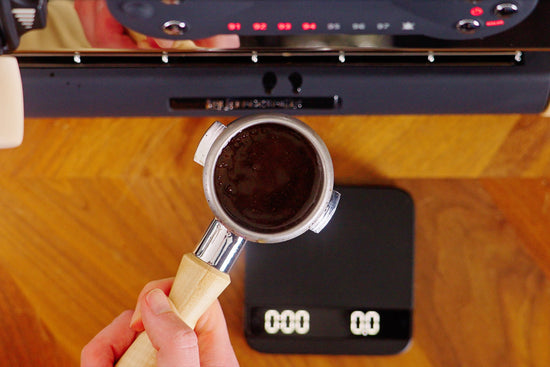The Dreaded Soggy Puck: What is it and How Can I Fix it?

Why Is My Puck So Soggy?

One of the most common concerns we hear from home baristas? The dreaded soggy puck. If it gives you any consolation, we've all had a soggy puck before. It's a rite of passage as a new barista. The journey of pulling a great shot of espresso is a balancing act: you manage countless variables to dial in the perfect extraction—dose, grind size, distribution, and extraction time, to name a few. It may feel overwhelming when you're just starting out, and now, to add insult to injury, your pucks are soggy. It’s easy to go down a rabbit hole of over-analysis when something looks off. So, what causes a soggy puck, should you be worried about it (hint: probably not), and how can you prevent it? Let’s assuage those fears. First up, the common causes of excess puck water and how to fix them.
Three-Way Solenoid Solution

This common cause of soggy pucks doesn't apply to any of the machines we carry, but it's important to mention anyway. If your machine does not have a solenoid, you'll likely get a soggy puck.
A solenoid is essentially a mechanical gate that controls water flow. When you start your shot, it opens; when you stop, it closes, preventing more water from flowing through. Machines without one allow excess water to spill into the puck post-extraction, leading to a sloppy mess. If you want to avoid this entirely, a machine with a solenoid is the way to go. Machines with pressurized baskets almost always lack a solenoid.
Under-Dosing

Pro tip #1: Always know which portafilter basket and portafilter you're using. This will help you adjust your espresso recipe accordingly, avoiding dosing issues.
Every portafilter basket has a recommended dose (usually printed on the side) to ensure optimal performance. For example, if you dose 14g of coffee in a 20g basket, you're creating extra headspace between the puck and the shower screen. The type of coffee you use determines the recommended dose, but a 20g basket can take anywhere between 18-22g of coffee.
When you stop your shot, water lingers in this gap, settling on top of the coffee bed rather than being fully absorbed or pushed through. Beyond a soggy puck, under-dosing can contribute to uneven extractions and heavy channeling. Everyone who has experienced a gusher shot at some point knows how stressful and messy they can be. The fix? Stick close to the recommended dose for your basket and avoid wearing white.
Pro tip #2: To ensure you're not under-dosing, we highly recommend using a scale like the LUCCA Precision Scale.
Your Grind is Way Too Fine

Typically, when you grind too fine, water struggles to pass through the grounds evenly. At the end of extraction, the puck may not fully absorb any remaining water, leaving a pool of water on top. Go ahead and adjust your grind coarser incrementally to open up the grind.
Espresso recipes that favor finer grind settings and tighter espresso ratios, such as ristretto shots, can also lead to soggy pucks. If you pull a ristretto, though, this is normal and doesn’t indicate a problem with your technique. If you love traditional Italian-style espresso, a little extra water in the puck is part of the experience.
Coffee Density Matters

Different coffees have different densities and moisture content, which can affect puck saturation. If you recently switched from a medium roast to a light roast and suddenly find yourself dealing with soggy pucks, the culprit might be the extra headspace created by the denser beans. Increasing your dose (up-dosing) slightly can help compensate and bring consistency back to your shots.
When a Soggy Puck Does NOT Matter

Here’s the thing: a soggy puck might be annoying, but it’s not always a sign that something is wrong. The real question you should ask yourself is: How does the espresso taste? If your shot is well-extracted, balanced, and delicious, then the state of the puck is just an afterthought. There's so much in espresso that we don't see, and we tend to hyper-focus on visual clues that often don't mean much. Go ahead and taste that shot, no matter what the puck looks like. You'll thank us. Cheers.